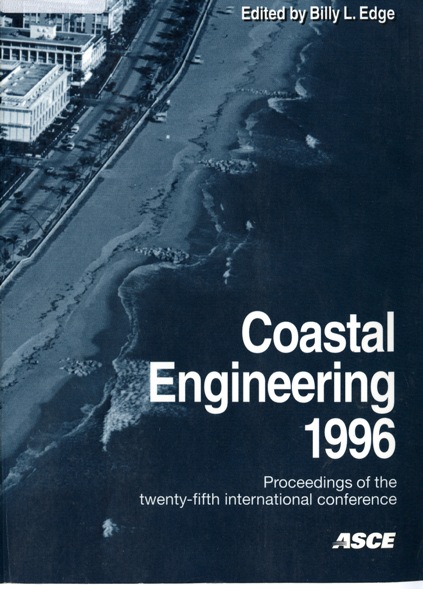Abstract
In 1985, unusual streaks were first seen in time exposure images of nearshore wave breaking. These features were persistent from image to image and ran perpendicular or oblique to the shoreline. They have been observed both between the shoreline and inner bar and offshore of the inner bar, and have a typical longshore wavelength of -40-130 m, substantially shorter than normal sand bar length scales. Comparison with bathymetric data collected by the CRAB showed the bands to be bathymetric ridges with a relief of 0.3-0.5 m. Both intensity transects as well as geometrically rectified images were used to determine the length scales of the bars. Longshore length scales of offshore bars (mean spacing of 131 m) were typically three times the spacing of trough bars (mean spacing of 41 m). The offshore limit of the visible features in the trough varied from as short as 5 m to a maximum of 35 m. Frequency of occurrence statistics for the bars were determined by viewing Argus data from 1987-1995. Trough bars appeared in the images an average of 62 days/year while offshore bars appeared 41 days/year although there was substantial interannual variability. Offshore bar occurrence is more frequent in the winter, and trough bar occurrence is more frequent in the summer.
Authors retain copyright and grant the Proceedings right of first publication with the work simultaneously licensed under a Creative Commons Attribution License that allows others to share the work with an acknowledgement of the work's authorship and initial publication in this Proceedings.

